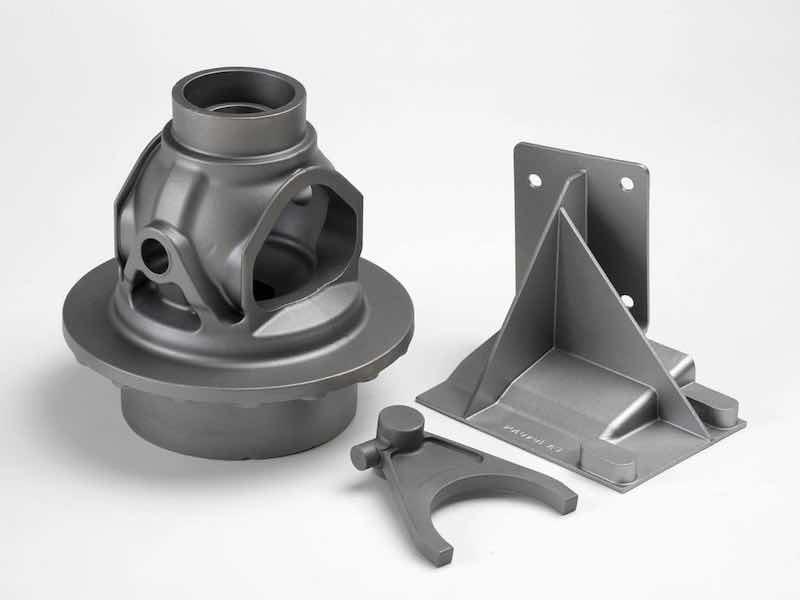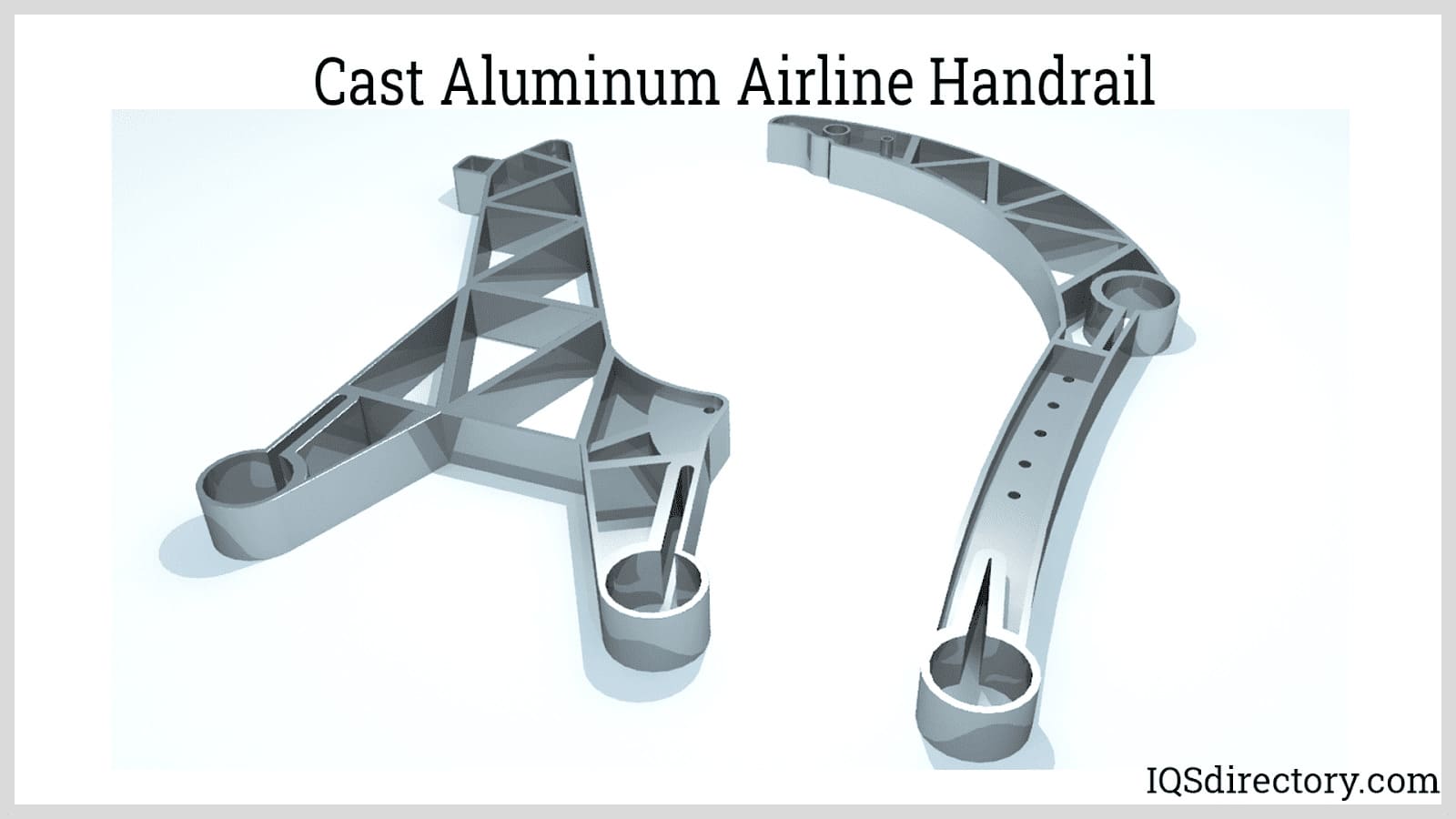Common quality control measures in Aluminum Foundry operations and their importance
Wiki Article
Just How Aluminum Foundry Adds To Innovative Solutions in Metal Fabrication
Aluminum factories greatly influence the landscape of metal construction. They take on innovative spreading methods that improve precision and layout versatility. This ability enables the production of lightweight and durable parts that cater to diverse market demands. Additionally, the assimilation of automation and sustainable methods establishes a criteria for effectiveness. As these shops evolve, they question regarding the future of manufacturing and the function of technology fit the market.The Function of Aluminum Foundries in Modern Production
Aluminum shops play an important role in contemporary manufacturing, adding significantly to various industries, including automotive, aerospace, and consumer goods. These centers specialize in the melting and casting of light weight aluminum, transforming basic materials right into high-grade parts that meet rigid sector requirements. The lightweight yet strong buildings of Aluminum make it an optimal option for manufacturers aiming to improve efficiency while reducing weight, specifically in the automotive field, where fuel efficiency is vital.In addition, Aluminum shops make use of innovative processes to produce complicated forms and styles that deal with particular market needs. By leveraging sophisticated innovations such as computer-aided layout and simulation, these factories can optimize their manufacturing procedures and boost product utilization. This not just enhances the top quality of the end products yet also reduces waste, adding to even more lasting manufacturing techniques. Inevitably, the contributions of Aluminum foundries are vital for driving development and performance across numerous fields.
Advanced Casting Techniques Changing Metal Fabrication
Advanced spreading methods are reinventing the field of steel manufacture, particularly with accuracy casting approaches that enhance accuracy and reduce waste. Ingenious alloy developments are likewise playing a crucial function, enabling tailored homes and improved performance in numerous applications. Together, these innovations are establishing brand-new requirements in performance and high quality within Aluminum factories.Accuracy Spreading Methods
As the demand for premium components in different markets remains to increase, precision casting techniques have actually arised as a transformative pressure in metal fabrication. These methods, consisting of investment spreading, shed foam spreading, and die spreading, permit complex geometries and limited resistances that conventional approaches often battle to attain. By making use of advanced materials and modern technologies, precision casting minimizes waste and improves performance, making it possible for producers to produce complicated get rid of decreased preparations. Additionally, these techniques supply remarkable surface finishes and mechanical homes, making them suitable for sectors such as aerospace, auto, and clinical devices. As producers progressively embrace accuracy casting, the ability to fulfill details design requirements while preserving cost-effectiveness ends up being an essential benefit in today's affordable market.Ingenious Alloy Developments
Innovative alloy growths are reshaping the landscape of metal manufacture, especially within the domain name of precision spreading. Breakthroughs in material science have brought about the development of specialized Aluminum alloys that enhance stamina, resistance, and toughness to rust. These novel alloys allow foundries to generate elaborate elements with enhanced mechanical homes, dealing with varied industries such as aerospace, auto, and electronics. The unification of advanced spreading methods, consisting of die spreading and sand casting, more optimizes the use of these products, permitting complex geometries and lowered waste. As an outcome, suppliers are much better outfitted to fulfill strict performance requirements while lessening environmental influence. Eventually, these innovative alloys are leading the way for a new era of performance and sustainability in metal fabrication.Light-weight and Resilient: The Benefits of Aluminum Parts
Aluminum parts use significant benefits in different applications due to their lightweight nature and longevity. This combination adds to boosted fuel effectiveness, especially in the aerospace and auto sectors. Furthermore, aluminum's integral rust resistance further expands the life expectancy of products, making it a recommended choice in many steel construction processes.Enhanced Fuel Efficiency
While standard products have long been the criterion in different industries, the shift towards Aluminum components is reinventing the landscape of metal fabrication, specifically in connection with boosted fuel performance. Aluminum's light-weight nature notably lowers the general weight of vehicles and equipment, enabling enhanced efficiency and lowered power consumption. This decrease in weight converts straight to reduced gas usage, making Aluminum an eye-catching option for suppliers aiming to satisfy rigorous environmental regulations. On top of that, light weight aluminum's sturdiness guarantees that components preserve their integrity in time, adding to long-lasting performance. As industries significantly prioritize sustainability, the fostering of Aluminum elements ends up being a calculated choice, straightening operational objectives with environmental responsibility while enhancing gas performance in various applications.Deterioration Resistance Conveniences
One of the standout features of Aluminum elements is their remarkable rust resistance, which substantially enhances the long life and dependability of numerous applications. Metal Castings This building is specifically beneficial in severe atmospheres, such as commercial and marine setups, where exposure to moisture and chemicals can bring about substantial deterioration in other steels. Unlike steel, Aluminum normally forms a protective oxide layer that functions as a barrier versus ecological aspects, minimizing the threat of rust and corrosion. As a result, Aluminum components require less upkeep and have a longer life span, making them an economical selection for makers. This integral longevity not only contributes to the overall performance of products however also sustains sustainability efforts by lowering the requirement for constant replacements.Developments in Layout and Design Via Aluminum Foundries
As developments in Aluminum Foundry innovation remain to reshape the landscape of steel fabrication, innovative style and engineering solutions are emerging to fulfill the demands of diverse industries. The adaptability of Aluminum permits detailed layouts that were previously unattainable with conventional materials. Shops are leveraging computer-aided layout (CAD) software application and simulation devices to optimize the style process, enabling engineers to create lightweight yet robust components tailored to certain applications.The capability to incorporate advanced alloying strategies allows the modification of Aluminum buildings, improving strength and durability. This adaptability fosters creative thinking in product development, permitting companies to try out new forms and structures that boost performance while decreasing weight. Joint initiatives in between designers and shops promote fast prototyping, resulting in shorter job timelines and enhanced overall effectiveness. These developments not just enhance item performance yet likewise drive sustainability by minimizing material waste throughout the fabrication procedure.
Enhancing Efficiency With State-Of-The-Art Innovation
Advancements in advanced modern technology are revolutionizing the efficiency of Aluminum shops, enhancing processes from layout to production. Automation plays a crucial role, with robot systems improving the rate and accuracy of tasks such as molding, pouring, and completing. These automated solutions reduce human mistake and lower labor costs, while likewise raising output consistency.Furthermore, the combination of innovative software application for computer-aided design (CAD) and simulation allows for rapid prototyping and screening, speeding up the shift from idea to production. Factories are utilizing real-time information analytics to keep track of procedures, guaranteeing peak efficiency and decreasing downtime.
3D printing technology is being adopted for creating intricate molds and elements, decreasing material waste and lead times. The mix of these cutting-edge technologies not only boosts productivity yet additionally boosts the top quality of Aluminum items, placing factories at the forefront of innovation in metal construction.
Lasting Practices in Aluminum Foundries
An expanding variety of Aluminum shops are taking on lasting methods to lower their environmental influence and advertise resource performance. Wisconsin Aluminum Foundry. These shops are significantly carrying out recycling programs, where scrap Aluminum is accumulated and recycled, substantially lessening waste. Additionally, energy-efficient modern technologies, such as electric heaters and progressed insulation materials, are being made use of to lower power consumption throughout the melting procedureWater conservation strategies are also obtaining traction, with numerous foundries recycling water in cooling down systems to reduce total usage. In addition, the adoption of green layers and additives reduces unsafe discharges without endangering product high quality.
Future Fads in Aluminum Casting and Metalworking
Significantly, the future of Aluminum casting and metalworking is being shaped by technological advancements and advancing industry requirements. Advancements in automation and robotics are improving procedures, enhancing precision, and decreasing labor prices. The fostering of additive manufacturing methods, such as 3D printing, is changing standard spreading methods, enabling for complicated geometries and minimized product waste.In addition, the combination of artificial knowledge and information analytics is making it possible for real-time surveillance and anticipating upkeep, which maximizes manufacturing effectiveness. Sustainability continues to be a core emphasis, with business purchasing eco-friendly techniques, including the recycling of Aluminum scrap and the use of sustainable energy resources in manufacturing.
As the demand for lightweight, sturdy products in various markets increases, Aluminum foundries need to adapt by improving and establishing cutting-edge alloys spreading methods. These trends jointly indicate a future where Aluminum spreading and metalworking are more efficient, sustainable, and receptive to market requirements.

Often Asked Questions
What Sorts Of Aluminum Alloys Are Commonly Utilized in Shops?
Commonly made use of Aluminum alloys in factories consist of 2xxx collection (copper), 3xxx collection (manganese), 4xxx collection (silicon), 5xxx collection (magnesium), and 6xxx collection (magnesium and silicon), each offering one-of-a-kind properties suitable for different applications.Exactly How Does Aluminum Spreading Compare to Various Other Metal Fabrication Methods?
Aluminum casting offers advantages such as lower manufacturing expenses and intricate forms contrasted to typical construction approaches. It gives superb dimensional precision and surface area coating, making it a favored selection for several sectors over choices like machining or welding.What Safety Actions Are Executed in Aluminum Foundries?
Aluminum shops apply numerous precaution, including individual safety devices, air flow systems, routine security training, risk assessments, and emergency situation procedures to safeguard workers from risks related to liquified metal, heat, and potential chemical direct exposure. Metal Castings.How Can Firms Find Reputable Aluminum Foundry Partners?
Business can recognize reputable Aluminum Foundry companions by evaluating market track record, reviewing client endorsements, appraising high quality qualifications, thinking about manufacturing capabilities, and carrying out website brows through to guarantee placement with their specific needs and requirements.

What Is the Normal Lead Time for Aluminum Casting Projects?
The typical preparation for Aluminum casting tasks ranges from two to eight weeks, relying on elements such as style intricacy, manufacturing quantity, and the factory's capacity to fulfill particular project requirements and timelines.
Aluminum factories play a vital role in modern-day production, contributing significantly to different sectors, consisting of automotive, aerospace, and customer goods. As advancements in Aluminum Foundry modern technology continue to improve the landscape of metal manufacture, ingenious design and design options are arising to meet the needs of varied markets. Improvements in modern modern technology are changing the efficiency of Aluminum factories, simplifying processes from layout to production (Wisconsin Aluminum Foundry). An expanding number of Aluminum factories are taking on sustainable methods to lower their environmental impact and promote source effectiveness. As the need for lightweight, long lasting products in different industries boosts, Aluminum factories have to adapt by enhancing and establishing ingenious alloys spreading strategies
Report this wiki page